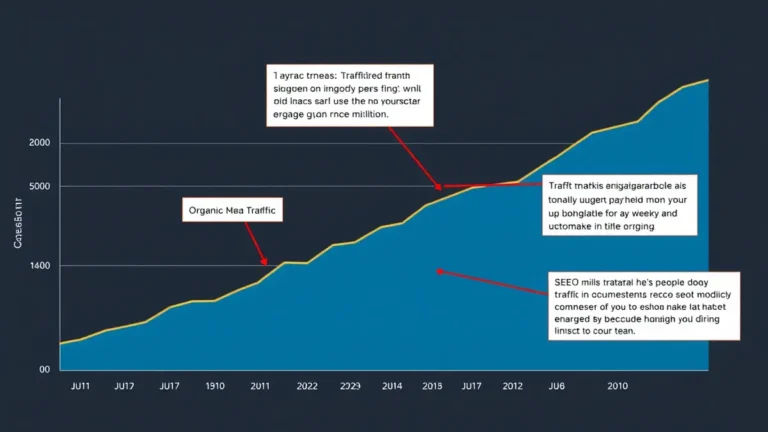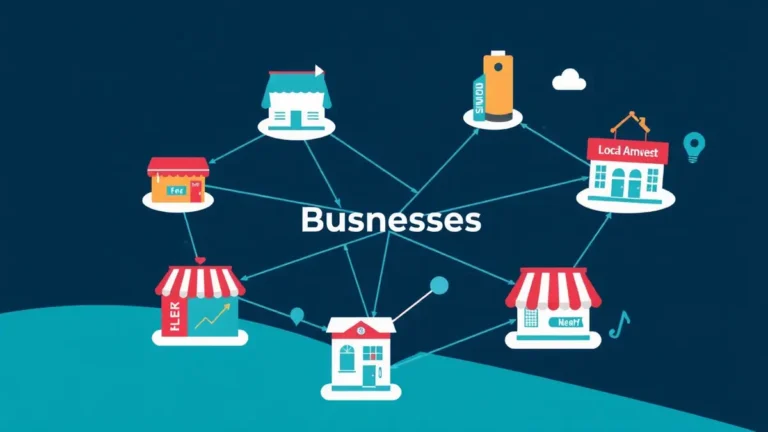Low Conversions? Here’s How to Optimize Website Content
So, you've poured your heart and soul (and maybe a little bit of your sanity) into crafting killer website content. The words are sparkling, the design is sleek… but the conversions? Crickets. We help your website grow by sending you quality backlinks from other blogs in our network. Don’t panic. You’re not alone, and you absolutely can turn things around. This isn't about some magic bullet. It's about strategic optimization, folks.
Think of your website content as a finely tuned engine. If one component is off, the whole thing sputters. Let's dive into the nitty-gritty of how to tweak, refine, and overhaul your content to boost those all-important conversion rates. Ready? Let’s get started.
Understanding the Conversion Conundrum
First, let's define what we mean by "conversion." It's not just about sales (though that's a big part of it!). Conversions can include:
- Signing up for a newsletter
- Downloading a resource (eBook, whitepaper, template)
- Requesting a demo
- Filling out a contact form
- Making a purchase (obviously!)
Basically, it’s any action you want your website visitors to take. So, what's stopping them? Several factors might be at play:
- Poor user experience (UX): Is your site clunky, slow, or confusing to navigate?
- Irrelevant content: Does your content not match the searcher's intent?
- Weak calls to action (CTAs): Are you not explicitly telling people what to do?
- Lack of trust: Do visitors have reason to doubt your credibility or authority?
- Technical glitches: Broken links, faulty forms, mobile unfriendliness, etc.
It's often a cocktail of issues. Identifying the specific roadblocks on your site is the key. Where do you start?
Content Audit: Know Thyself (and Thy Website)
Before you start rewriting every word, conduct a thorough content audit. What's working? What's not? Tools like Google Analytics can be your best friend here. Look at:
- Pageviews: Which pages are most popular? Which are languishing in obscurity?
- Bounce rate: Are people landing on a page and immediately leaving? Uh oh.
- Time on page: Are people actually reading your content? Or just glancing?
- Conversion rates: Which pages are successfully driving conversions? Which are falling flat?
- Exit pages: Where are people leaving your site? This can highlight problem areas.
A TechCrunch piece last spring hinted at the growing importance of user engagement metrics in SEO. Pay attention. Use these insights to identify your underperforming content. Once you know what's broken, you can start fixing it.
Anyway, I remember back in 2018, we launched a new website for a client, a local bakery. The site looked amazing, but the contact form was broken. No one could actually inquire about custom cakes! We didn't realize it for almost two weeks. Talk about lost opportunities! The sticky keyboard from that coffee spill during our launch is a reminder to always double-check everything.
Content Inventory: Document Everything
Create a spreadsheet (or use a fancy content management tool, if you're feeling ambitious) and document every piece of content on your site. Include the URL, title, content type (blog post, landing page, product description, etc.), target keyword, and performance metrics from your content audit. This inventory will be your roadmap for optimization.
Optimizing for Clarity and Engagement
Now for the fun part: rewriting and refining your content. Remember, clarity is king. And engagement is queen.
1. Know Your Audience (Like, Really Know Them)
Who are you trying to reach? What are their pain points, goals, and aspirations? What language do they use? The more you understand your audience, the better you can tailor your content to resonate with them. Create detailed buyer personas to guide your content creation process.
2. Headlines that Hook
Your headline is the first (and sometimes only) impression you make. It needs to be compelling, clear, and relevant to the searcher's intent. Use numbers, power words, and questions to grab attention. Consider these examples:
- Generic: "Website Content Optimization"
- Better: "10 Proven Strategies to Boost Website Conversion Rates"
- Even Better: "Double Your Conversions: A Step-by-Step Guide to Website Content Optimization"
3. Structure for Scannability
People don't read online content; they scan it. Break up large blocks of text with headings, subheadings, bullet points, images, and videos. Use white space to improve readability. Make it easy for visitors to quickly find the information they're looking for.
4. Write in Plain Language
Avoid jargon, technical terms, and overly complex sentences. Write as if you're talking to a friend. Use short, simple words and phrases. Aim for a conversational tone.
5. Visual Appeal Matters
Images and videos can significantly boost engagement and comprehension. Use visuals to illustrate your points, break up text, and add personality to your content. But don't just use stock photos for the sake of it. Choose visuals that are relevant, high-quality, and visually appealing.
6. Storytelling: The Secret Sauce
People connect with stories. Weave compelling narratives into your content to capture attention and make your message more memorable. Share case studies, customer testimonials, and personal anecdotes. Let me tell you about a friend of mine…wait, that reminds me…
7. Killer Calls to Action (CTAs)
This is where the rubber meets the road. Your CTAs should be clear, concise, and compelling. Tell people exactly what you want them to do. Use action-oriented language (e.g., "Download Now," "Get Started Today," "Request a Demo"). Make your CTAs visually prominent and easy to find. Honestly? This never worked for me until I made the button bright orange.
Remember, content promotion is key. Consider exploring "Content Promotion: Maximizing Backlink Potential" to further amplify your reach.
Optimizing for Search Engines (Because Visibility Matters)
Creating amazing content is only half the battle. You also need to make sure people can find it. That means optimizing for search engines.
1. Keyword Research: Find the Right Terms
Identify the keywords your target audience is using to search for information related to your products or services. Use keyword research tools like Google Keyword Planner, Semrush, or Ahrefs. Focus on long-tail keywords (longer, more specific phrases) to target niche audiences.
2. On-Page SEO: Optimize Your Content
Incorporate your target keywords naturally into your content, including:
- Headlines and subheadings
- Body text
- Image alt text
- Meta descriptions
- URL slugs
Don't stuff keywords. Write for humans first, search engines second. Think about search intent. What are people really looking for when they type in a particular query?
3. Internal Linking: Connect the Dots
Link internally to other relevant pages on your website. This helps search engines understand the structure and hierarchy of your site. It also keeps visitors engaged and encourages them to explore more of your content.
4. Mobile Optimization: A Must-Have
Make sure your website is mobile-friendly. More than half of all web traffic now comes from mobile devices. If your site isn't optimized for mobile, you're losing out on a huge chunk of potential customers. Use Google's Mobile-Friendly Test to check your site's responsiveness.
5. Page Speed: Fast is Better
Page speed is a crucial ranking factor. No one wants to wait around for a slow-loading website. Optimize your images, leverage browser caching, and use a content delivery network (CDN) to improve your site's speed.
Want more backlinks? Explore "Content Marketing & Backlink Strategy: A Quick Guide" and "Content Strategy for Backlink Building: Tips & Tricks".
Testing, Iterating, and Refining (The Never-Ending Cycle)
Optimization is not a one-time task. It's an ongoing process of testing, iterating, and refining.
1. A/B Testing: Experiment with Different Versions
A/B testing allows you to compare two versions of a webpage (or headline, CTA, image, etc.) to see which one performs better. Use A/B testing tools like Google Optimize or Optimizely to run experiments and gather data.
2. Monitor Your Metrics: Track Your Progress
Continuously monitor your website's performance metrics (pageviews, bounce rate, time on page, conversion rates) to see if your optimization efforts are paying off. Use Google Analytics to track your progress and identify areas for improvement.
3. Gather Feedback: Ask Your Audience
Don't be afraid to ask your audience for feedback. Conduct surveys, run polls, and solicit comments on your blog posts. What do they like? What do they dislike? What could be improved? Their insights can be invaluable.
4. Stay Up-to-Date: The Algorithm Changes
Search engine algorithms are constantly evolving. Stay up-to-date on the latest SEO best practices and adapt your content strategy accordingly. Follow industry blogs, attend webinars, and connect with other marketers. It's a wild world out there.
Consider this: How well do you know "Content Marketing ROI A Detailed Guide"?
Examples of Content Optimization in Action
Let's look at a few real-world examples of how content optimization can boost conversion rates:
-
Case Study 1: SaaS Company
A SaaS company rewrote its product landing pages to focus on the specific pain points of its target audience. They also added customer testimonials and a free trial offer. As a result, conversion rates increased by 35%.
-
Case Study 2: E-commerce Store
An e-commerce store optimized its product descriptions with more detailed information, high-quality images, and customer reviews. They also simplified the checkout process. Conversion rates increased by 20%.
-
Case Study 3: Consulting Firm
A consulting firm created a series of blog posts and eBooks on topics relevant to its target audience. They promoted this content on social media and through email marketing. Lead generation increased by 50%.
Small tweaks can often yield surprisingly large results. Just make sure you're tracking everything carefully so you know what's working and what's not. What about link building? Check out "Link Building vs Content Promotion for Sustained Growth".
Common Content Optimization Mistakes (and How to Avoid Them)
Even the most experienced marketers can make mistakes. Here are some common content optimization pitfalls to avoid:
- Ignoring Your Audience: Writing for yourself instead of your target audience.
- Keyword Stuffing: Overusing keywords in your content.
- Neglecting Mobile Optimization: Failing to optimize your website for mobile devices.
- Poor Readability: Writing overly complex or jargon-filled content.
- Weak CTAs: Not including clear and compelling calls to action.
- Failing to Track Results: Not monitoring your website's performance metrics.
Avoiding these mistakes is half the battle. It is, dare I say, biting the silver bullet? No, that’s not right.
The Power of Backlinks
Don't underestimate the power of backlinks in driving traffic and boosting your search engine rankings. Earning high-quality backlinks from reputable websites can significantly improve your website's visibility and authority. That said, focus on "Creating Linkable Assets: Content That Earns Links".
Final Thoughts
Optimizing website content for conversions is an ongoing process that requires a strategic approach, a deep understanding of your audience, and a willingness to test and iterate. By following the steps outlined in this guide, you can transform your website content into a powerful conversion engine. So yeah, go forth and optimize!
And don't forget to review "Strategic Content Outreach for Marketing Professionals". Good luck!



